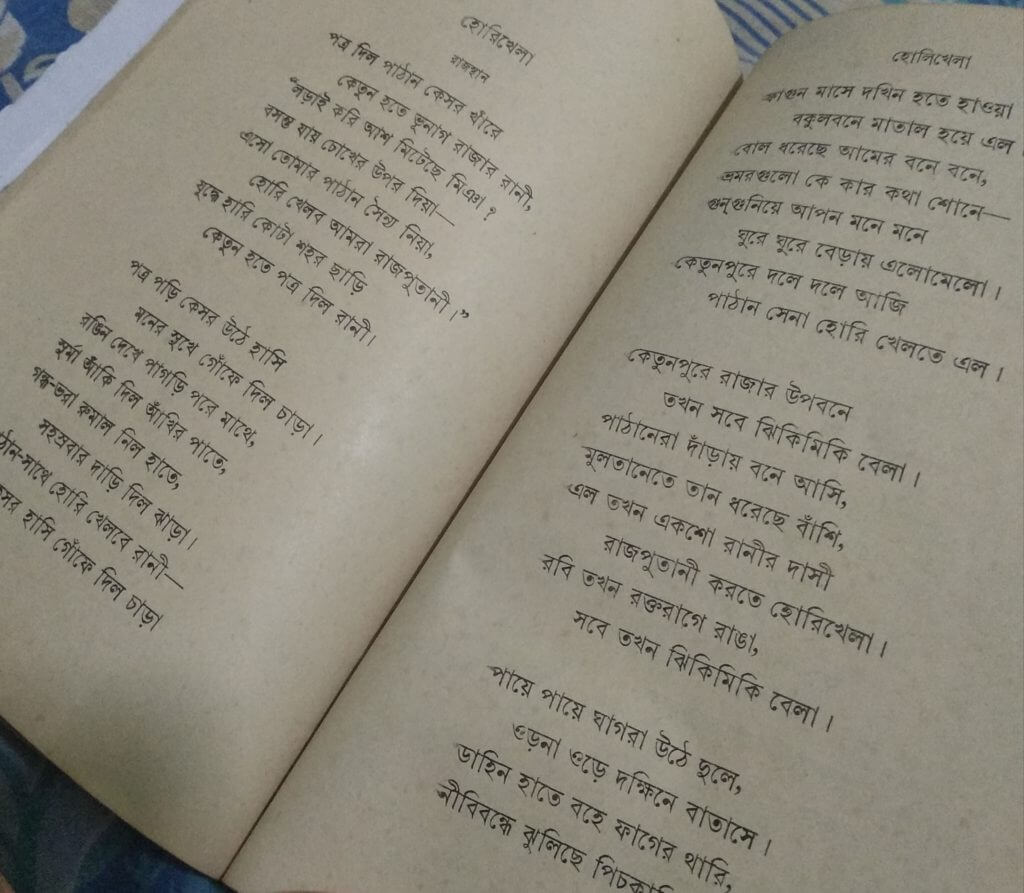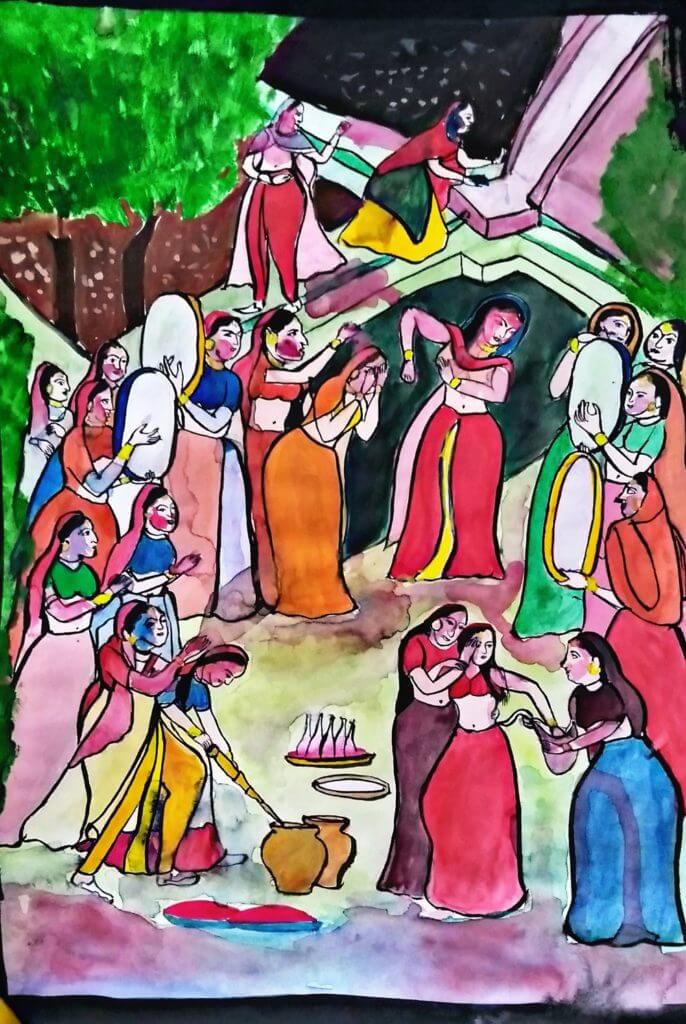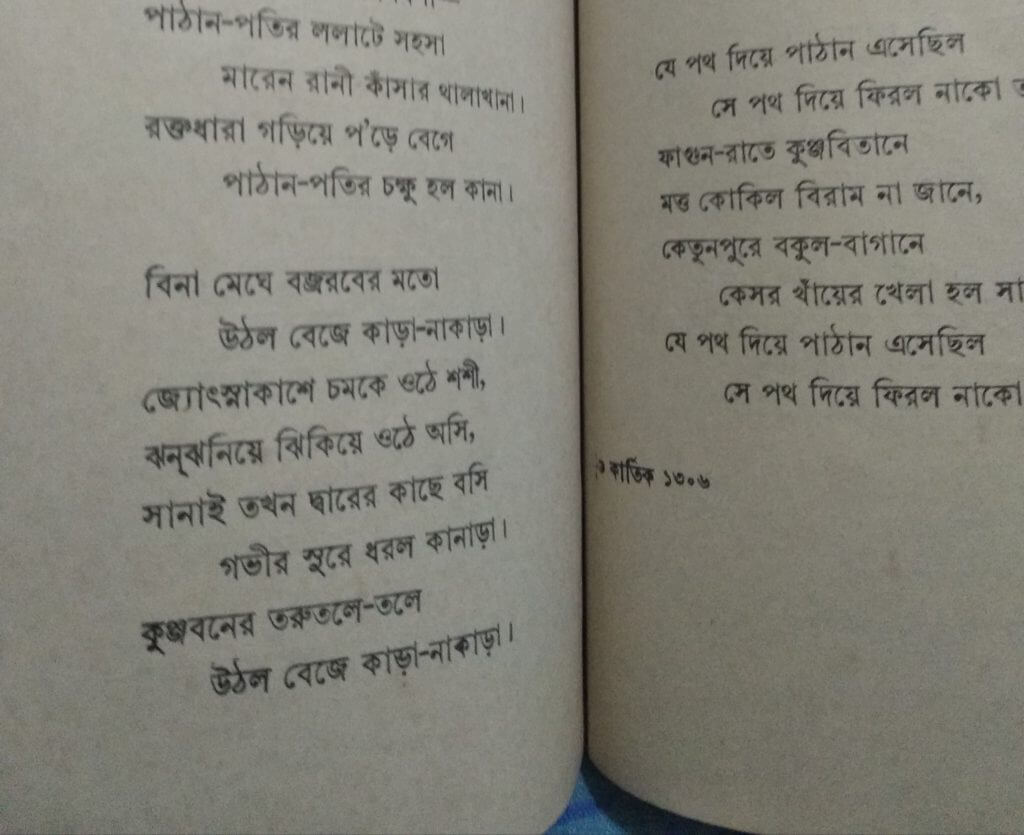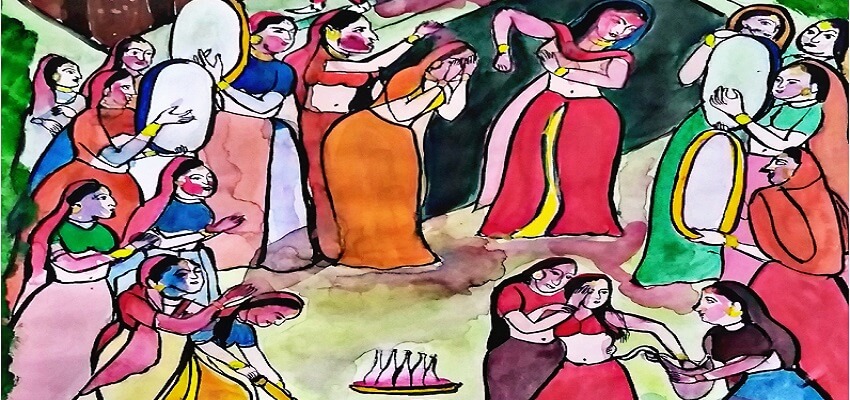Holi is a significant Indian festival that ushers in spring with splashes of colours. Almost all Indian writers, including Rabindranath Tagore, have written literary pieces on Holi and Doljatra. Among them, the ballad, ‘Horikhela’ is a masterpiece by him. In this ballad, the Indian writer and first Indian Nobel Laureate in Literature, Rabindranath Tagore, had brought alive a historical event that happened back in 17th century India.
The background of ‘Horikhela’:
Rabindranath Tagore read James Todd’s ‘The annals and antiquities of Rajasthan’ and decided to write a few dramatic ballads on the events described in the book. The result was ‘Katha,’ an anthology of ballads based on Sikh kings and Rajput kings, written during 1899. In ‘The annals and antiquities of Rajasthan,’ the event that inspired ‘Horikhela’ was dated 1646 A.D.

In that year, Kesar Khan and Dokar Khan, two Pathan rulers, conquered Kota from the Rajput King Bhongasi or Bhunaag. The king and his queen Rani Roopmati, with their subjects, went away to Kaitun or Kaitunpur. Rani Roopmati was known for her enchanting beauty and there was no doubt that her beauty attracted Kesar Khan. How the queen called Kesar Khan to play Holi with her and got him subdued is the ballad’s essence described beautifully by Rabindranath Tagore.
The Summary of ‘Horikhela’:
On a pleasant spring evening, the queen of Kota sent a letter to Kesar Khan from Kaitun. The letter read, “Are you satisfied after taking over Kota? Would you please come to Kaitun with your soldiers? All the Rajputanis here, including myself, are looking forward to play Holi with you.”
Kesar Khan, already besotted with the queen’s gesture, prepared himself to meet her. The soldiers and Kesar Khan went to Kaitun, dressed in their best colourful attires. The queen and her women heartily welcomed the Pathan soldiers and their king with large plates of gulal (abir, faag) and pichkaris loaded with coloured waters. As they started splashing the colours all over, they danced merrily.
Buy Rabindranath Tagore’s Katha O Kahini, online.
After observing the dancing Rajputanis, a doubt started building over Kesar Khan’s mind. He felt that the women were not actually women. Seeing him perplexed, the queen, Rani Roopmati, came ahead with a huge bell-metal plate that carried a huge heap of gulaal. Before Kesar Khan looked up to her, she threw the plate on him. Kesar Khan turned blind as a result.
In the meantime, all the Rajputanis tore open their dresses and brandished the swords. They revealed themselves as the Rajput soldiers who were dressed up as queen’s women. They valiantly fought until the entire Pathan troupe was killed along with Kesar Khan. The Pathan soldiers came but never went back.
Recommended Read: Review on Rabindranath Tagore’s short story ‘Streer Patra’

Literary Style and Treatment
Since Holi is an Indian theme, the writing style was that of an Indian writer choosing to write on Basanta, the king of all seasons, the spring. The blooming mango trees, the cuckoo’s songs, the humming of the bumblebees, the sweet southern breeze and the spring flowers are wonderfully described as the natural setting.
Holi, being a festival of colours, the poet had brought in descriptions like red sun, shining day, coloured fog along with the vivid descriptions of the colourful ambience of Kaitun on the event of Holi. On reading the poem, anyone would be able to relate to the occasion on which people made merry and splashed colour on each other as a gesture of love, humanity and fraternity.

P.C: KolkataFusion
But, to us, Holi, also mythologically stands for the victory of good over evil. Therefore, as an Indian writer, Bengali poet Rabindranath Tagore probably could not ignore putting in a plot of revenge and fighting for what seemed right to the queen to win back Kota, her lost kingdom.
The treatment of the ballad was dramatic. The drama built slowly over the stanzas that described the change of flute’s tune from Raag Multani to Iman Bhupali to Darbari Kanara. The Darbari Kanara’s melody floated over as the war went on till the victory was achieved.
The ballad ended with a poignant description of the Pathan troupe that never went back and stayed amidst the cuckoo’s incessant songs and the south breeze that blew throughout the spring. At the end, even for a fraction of a second, the readers would feel sorry for the fate of the Pathan soldiers. It was apparently wrong to invite them for Holi’s merriment and kill them in return….but there goes the saying, “All is fair in love and war!”
We are a participant in the Amazon Services LLC Associates Program. We may earn a small commission if you purchase products via our website. Your purchases support us in bringing you informative and fun-filled articles.

